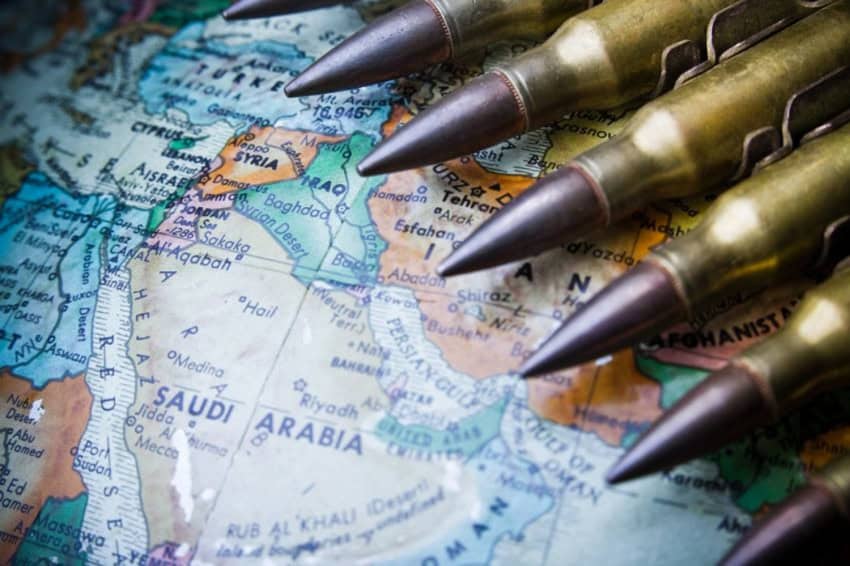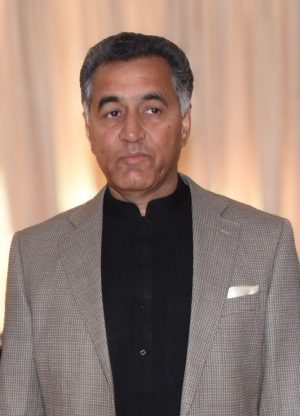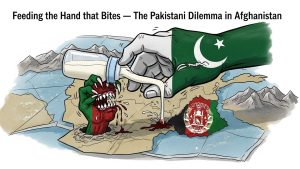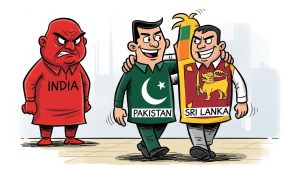In 1996 Samuel P. Huntington published a book titled ‘’The Clash of Civilizations and the Remaking of World Order’’. For whatever its shortfalls this was a landmark piece of work in which Huntington tried to explain the ongoing conflicts of our times on the basis of a clash between different sets of civilisations. Unsurprisingly the most important of these conflicts was between the Muslim and the non-Muslim world. In particular the conflict between what he calls the Western Civilisation (Western Europe and the USA) and the Islamic Civilization (Countries mostly in Middle-East or around it) take the paramount position.
Huntington argues that civilizational conflicts are “particularly prevalent between Muslims and non-Muslims”, identifying the “bloody borders” between Islamic and non-Islamic civilisations. He states that ‘’This conflict dates back as far as the initial thrust of Islam into Europe, its eventual expulsion in the Iberian reconquest and the attacks of the Ottoman Turks on Eastern Europe and Vienna.’’
(It is worth noting that the non-Muslims involved in these conflicts have been mostly Christian countries and even now though the West is secular the majority of its people are at least nominally Christians.)
And here I differ with his assessment in the historical context for in my view the clash between what he now describes as the Muslims and non-Muslims or Islamic and Western (Christian) civilisation pre-dates the arrival of both Islam and Christianity by many centuries! And hence to me this is not in its origin a religious conflict but a conflict that started before it got the current religious colours. Let me elaborate.
The Conflicts
I feel that the current conflicts are the continuation of something that started around 2500 years ago, I call it The Clash of East and West or roughly the conflict between Asia and Europe.
Within this-this conflict there was another conflict running in parallel for a while which I call the clash between North and South. This has ended but needs mention to get the full picture.
Let us look at both of these.
East v West (Asia v Europe)
If you look at the map you would note that at the Western edge of modern day Turkey only a thin strip of water separates Asia from Europe. Somehow, I don’t know why this separation between the two existed as far back as 3000 years. For some unknown reason while people moved freely between these two continents those in Asia developed a different thought process to those in Europe.
Without a doubt, the initial development of settled communities, as opposed to nomadic ones, was in villages which became towns and then cities. This was the same in Asia and Europe. But then the two developed differently.
In Asia from around 1000 BC cities started to form Kingdoms and these grew into Empires. The Empires of which the two earliest were the Assyrians and the Babylonians (both from today’s Iraq) subjugated people of different languages/culture under their rule. In 550 BC Cyrus the great created in relative terms perhaps the greatest empire in history, the Persian Empire. Expanded by Darius the boundaries of this empire stretched from the Western tip of Turkey Eastwards to Pakistan and from Central Asia to Egypt north-south. Note that all these countries that were part of this empire would fit in within the present day Muslim block of civilisation.
While the Persians were building this empire just across in Europe the Greeks remained in city states. The Greek cities remained independent and autonomous and did not become one kingdom or empire. The system of governance in these cities varied widely from kingship to democracy but the overriding feature was for the Greeks to think independently and refuse to accept one man as the overlord of all Greeks like the Persians and the other nations of their empire had done where the ruler was not just Shah (King) but Shahan-shah (The King of Kings).
Around 500 BC the Persians standing on the Western most fringe of their empire found themselves staring at Europe across the water. For some unknown reason, they wanted to cross the water and subjugate the Greeks. I say unknown because by and large the Greeks were poor and there does not seem to be any compelling reason for Persians wanting to invade them There were much richer picking at the Eastern end of their Empire where they had India as the neighbour or even the North-East where they could have moved into China. Still, for some unknown reason, they invaded Greece and hence started the clash between East and West/Asia and Europe. It is worth noting that the first aggressor was East/Asia.
The Persian invasion of Greece failed. The Greeks retained their independence though the Persians continued to play a role in conflicts between Greeks just like the present day Imperial powers do for smaller states.
In 336 BC Alexander became the king of Macedonia, a martial state north of Greece. His father had already reduced the Greek cities to his vassals and Alexander finally ended the independence of Greek cities making them into one Kingdom. And then Alexander went east. Why he went east and not west is much easier to explain. There was the vast wealth of the Persian Empire to loot and there was also the question of avenging the Persian invasions. So here we have the first counterattack by West (Europe) on East (Asia). This was much more successful and the Persian Empire disappeared.
Alexander died before he could consolidate his vast Empire and after that, the Persians rebuilt their empire. Once again after doing this they wanted to expand westwards but their path was blocked by the rise of another European power Rome.
And from the start of the First millennium for the next 600 years, the clash between East and West was the ongoing tug of war between Persia and Rome. Most of the conflict took place in Asia for the Romans managed to keep hold of many Asian countries like Turkey, Syria, and Jordan etc. though in the last great war between the two fought in 602-628 AD the Persians evicted the Romans from all of Asia but were unable to take their capital the great city of Constantinople which straddles the gateway into Europe.
Not long after this war a new power emerged in Asia, the Arabs. United into a single nation under the banner of Islam by Mohammad the Arabs ended the Persian Empire and once again evicted the Romans from Asia. This was now the next phase of East (Asia) trying to conquer Europe and now it had acquired the status of a Muslim v Christian conflict. Once again, great emphasis was placed on subjugating Europe.
Although the Arabs like Persians had India and China at their Eastern boundaries they showed no desire to conquer them. Constantinople was given so much importance that a hadith (probably invented by Caliph Omar) quoted the Prophet Mohammad declaring that he who takes this city will get a free ticket to paradise. So the Arabs came, again and again, year after year only to smash themselves against the walls of Constantinople but unable to breach them.
While the Arabs failed to move into Europe from its Eastern frontier they successfully did it from the other end. Crossing another narrow body of water an Aran army conquered Spain in 715 and then advanced into France before it was stopped just 100 miles south of Paris.
Over in the old theatre, the decline of Arabs allowed the Romans to push them away and the West counterattacked launching the Crusades.
Eventually, around 1200 AD the Arab empire was destroyed by the Mongols.
Not long after that, another set of Martial people appeared, the Turks, and after they converted to Islam they established themselves in central Turkey and from here, once again they desired Western lands more than Eastern. And hence around the middle of 15th Century started the final and most determined assault on West (Europe) by East (Asia). Over the next 200 years, the Turks conquered many European lands including Greece and Hungary and twice besieged Vienna. The tide turned for good in the 17th century and the Turks were gradually pushed out of Europe till at the end to of the First Great War in 1918 the last Eastern (Asian) empire that could face the West (Europe) was destroyed.
Since then the West has totally dominated east with its massive superiority in technology both military and non-military. The East (Asia) is no match for the West (Europe and its extension USA) in a conventional war. However, the age-old conflict between the two has continued and has taken the form that we see today. While the West is keen to guard its imperial interests in East some people in East want nothing less than a destruction of Western civilisation for they no longer feel they can conquer the West. They are now fighting an asymmetrical war which consists of attacks like the spectacular 9/11 attack and others in US, UK, France and Spain.
So the war continues despite the combatants wearing different dresses, holding different weapons, speaking different languages and worshiping different gods to those who started it 2500 years ago.
North v South
I will briefly touch on this which as I said has acted as a sub-plot to the wider East v West conflict. If you look at the map again and from Western border of Spain and France if you draw a line horizontally eastwards to the end of the land mass you can roughly divide the lands into North and South.
From ancient times all the major civilisations and powers emerged from the South. In Europe, they were Greeks and Romans and in Asia Persians, Indians, Chinese and later Arabs.
There was, therefore, an ongoing conflict between people who lived north of this and those in South. In Europe, this conflict was between Rome and the Germanic Tribes (which lived in present-day Germany) and although Rome had a massive empire her mighty legions despite repeated attempts could not subdue the Germanic tribes who eventually overran the Western Roman Empire around 450 AD.
The resulting fusion between Germanics and Romans created the Western Europe as we know it. All of its major nations were established by these vigorous Germanic people may that be France (Franks from Germany), Britain (Angles and Saxons from Germany) and obviously Germany itself. And no need to repeat that the USA is just an extension of Western Europe so in essence the modern world is dominated by the eventual victors of the North-South conflict in Europe.
In Asia there was a similar clash between North and South, here North was represented by the Mongols who at one time looked to be unstoppable and could well have over-run Europe and India but went into decline as they failed to evolve modern systems like the Germanics.
Please note the above is a much simplified historical analysis taken in the broader sense and cannot cater for details as this is a vast and complex subject.














